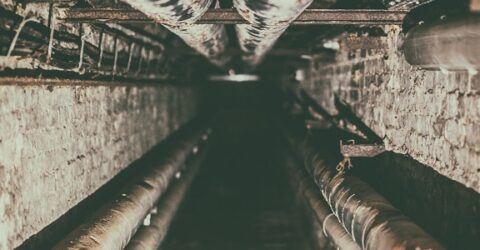Plan to map the world under our feet could stop broadband outages
A national underground asset register might stop broadband outages by showing utility companies where infrastructure is buried.

If you’ve ever walked around a part-constructed housing development, you’ll know how many subterranean pipes have extensions poking above the soil.
There are water mains and sewage outflows, gas pipes and electricity cables. Then there’s the fourth modern utility – broadband cables.
On an active construction site, it’s easy to see where each pipe is, and what it does. But once the turf’s laid and the roads are tarmacked, it’s impossible without ground-penetrating radar.
The difficulties this raises in terms of servicing and maintaining those pipes is considerable, yet it’s nothing compared to the issues if a pipe is inadvertently severed or damaged.
It’s been calculated that the UK loses £2.4 billion every year through accidental utility damage – mainly triggered by remedial works affecting unrelated infrastructure.
There are an estimated 60,000 of these accidental asset strikes across the country on an annual basis.
The UK government has belatedly attempted to tackle this by developing a national database of where all these cables are buried.
In doing so, they might also stop broadband outages – or at least minimise them…
Buried treasure
It’s estimated that we have four million kilometres of buried pipes below our feet across the UK, belonging to over 650 asset owners across the public and private sectors, including ISPs.
Before setting shovel to ground, companies must contact multiple organisations to obtain data on known assets – across incompatible formats, to different scales and levels of accuracy.
The National Underground Asset Register (NUAR) attempts to simplify this by creating a single digital map showing the locations of (almost) all our underground pipes and cables.
This is useful since many of the four million holes dug in the UK each year (one every seven seconds) are in the wrong place.
Sink a digger arm into the wrong location, and instead of excavating up to the top of a gas main, the arm might go straight through a broadband cable instead.
Comprising slender fibre-optic cables in a thick plastic sheath, broadband cables are surprisingly easy to drill/slice/dig/cut through, especially using industrial machinery.
If a navvy in a mini digger chooses not to inform their line manager of any such incidents, it could take an ISP weeks to determine how and where the ensuing network fault originated.
Meanwhile, consumers would be experiencing a deterioration in service, if not a full outage. They’d blame the ISP for this service interruption – unjustly, if understandably.
Any interactive map showing the position of ISP cabling should help to stop broadband outages occurring through misplaced utility works, or ignorance about local infrastructure.
Other benefits of NUAR are expected to include better urban planning and quicker repair works, with less road/pavement closures or traffic management.
NUAR then
Following several years of design and development, NUAR’s construction began in 2021, led by a consortium of developers including engineering firm Atkins and Ordnance Survey.
A beta version went live in April for testing, though it only presently covers London, Wales and the north-east of England.
It’s worth noting this is a corporate service, with no consumer access. Statutory owners in these three regions will have to register with an onboarding team to access NUAR data.
Technical support is only available during office hours, and there is no information on when mapping will be added for the rest of England and Northern Ireland.
As is always the way, Scotland has followed a different path by developing its own Scottish Road Works Register, updated with new infrastructure six times each year.
A separate Scottish Community Apparatus Data Vault will display underground pipe and cable information via the SRWR. However, it lacks telecom data.
It’s also worth noting that there are already free searchable utility asset maps in the rest of the UK, such as LSBUD (Line Search Before You Dig), so the NUAR isn’t unique.
Nor will it be compulsory – to begin with, at least.
Even so, it should evolve into the UK’s definitive catalogue of underground assets, providing every firm contributing data to it provides accurate cabling information…






